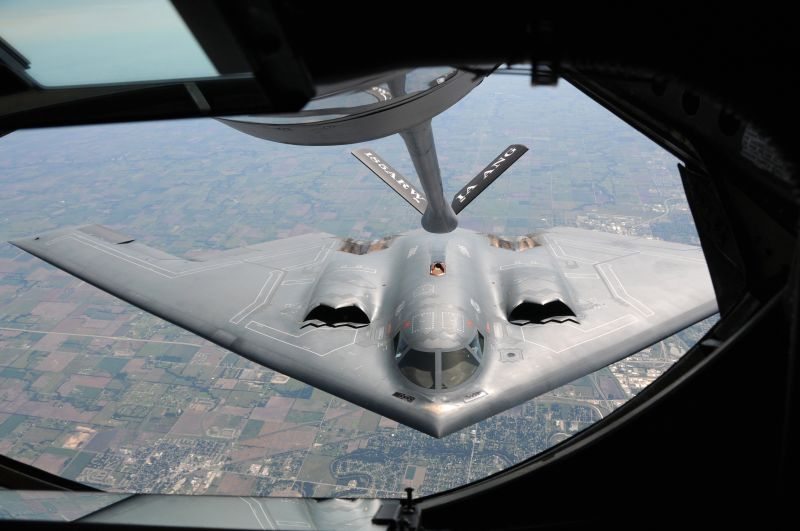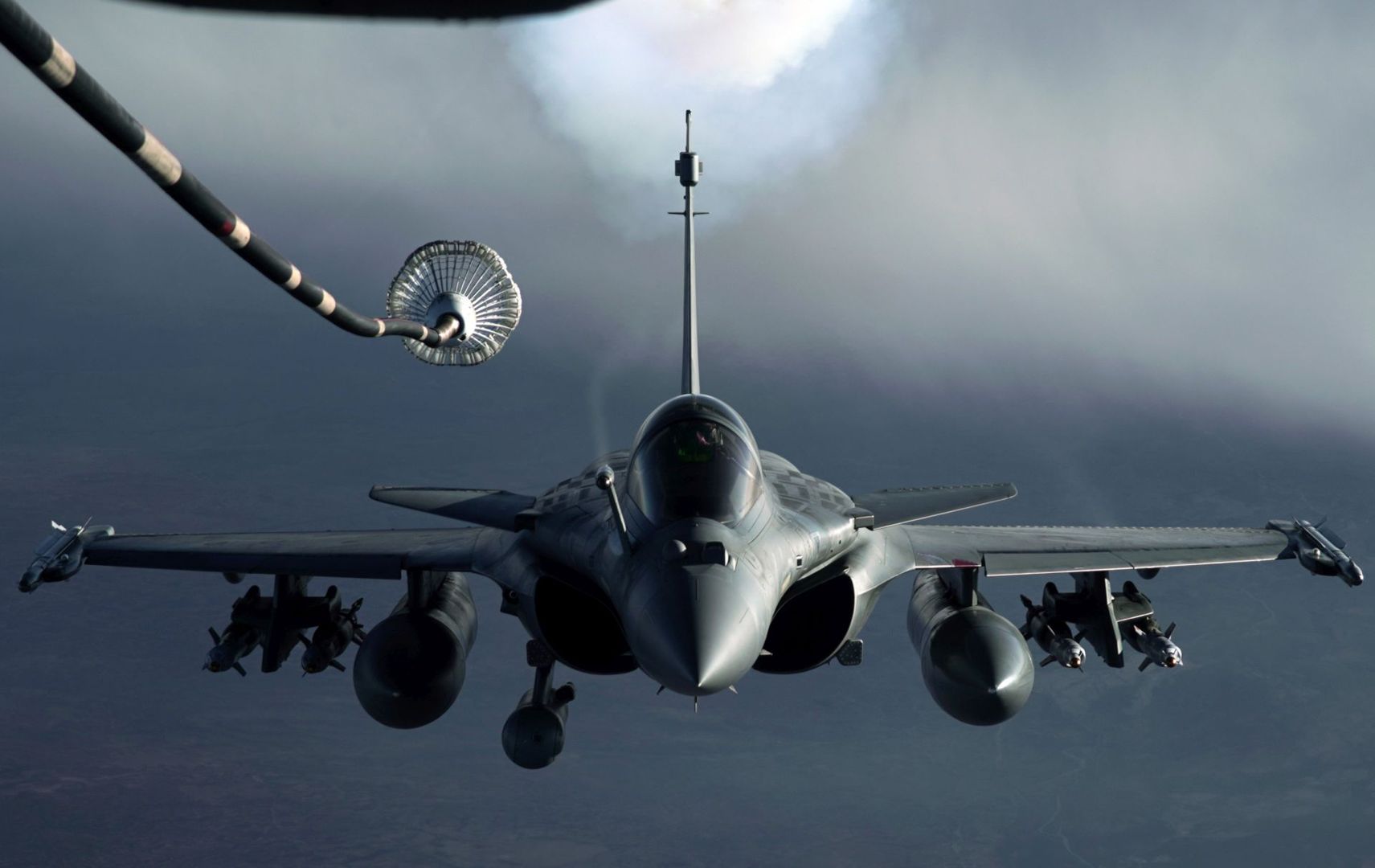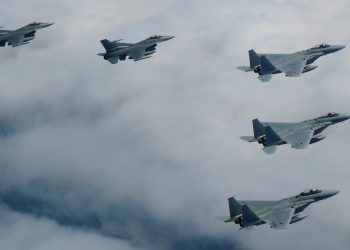The United States’ existing long-range bomber fleet of B-52s, B-1s, and B-2s are at a critical point in their operational life span. With the average age of each airframe being 50, 28, and 20 years old, respectively, military analysts are beginning to question just how long these aircraft can physically last and continue to be credible weapon systems.
As potential adversaries acquire twenty-first century defense systems designed to prevent U.S. access to the global commons (sea, air, space, and cyberspace) and to limit U.S. forces’ freedom of action within an operational area, the ability of these Cold War era bombers to get close enough to targets to be effective will continue to deteriorate.
Although the Air Force is committed to the development and acquisition of its proposed Long-Range Strike-Bomber (LRS-B), it is anticipated that flight-testing of the new bomber will not start until the mid-2020s, with initial operational capability near 2030.
With this timeline in mind, the Air Force has extended the operational lives of the B-52 and B-1 out to 2040 and the B-2 out to 2058. Air Force and aerospace industry experts insist that with sufficient funding for sustainment and modernization over their expected lifespans, all three of the existing bombers can physically last and continue to remain credible weapon systems. However, appropriations decisions made by Congress based on required military capabilities to meet national security objectives will ultimately determine how long the B-52, B-1, and B-2 will remain in service.
The central issue for Congress is how much funding should be appropriated for the continued sustainment and modernization of the B-52, B-1, and B-2 bombers over the remainder of their service lives. Interest in this subject stems from Congress’s authority to approve, reject, or modify Air Force funding requests for bomber sustainment and modernization as well as its oversight of the nation’s long-range strike requirements and capabilities.
In addition, sustainment, modernization, and size of the bomber force have been perennial legislative topics since the early 1990s. As the Air Force progresses through development and acquisition of the LRS-B and begins the gradual phase-out of 50-year-old bombers, it is anticipated Congress will continue dealing with bomber sustainment and modernization legislation. Congress’s decisions on appropriations for the bomber force could affect the nation’s long-range strike capabilities and have unintended consequences on U.S. national security as well as the U.S. aerospace industry.
The context through which Congress will make these decisions includes U.S. national security and defense strategies and the expectation of the role the B-52, B-1, and B-2 will play in executing those strategies.
Some of the many global and strategic variables that could become central in Congress’s decision making on the bomber force include the following:
- the Obama Administration’s 2012 rebalance in national security strategy toward the Asia-Pacific region and the military implications applicable to the bomber force;
- the expected contribution of bombers in accomplishing the critical missions of U.S. Forces as outlined in the Department of Defense’s strategic guidance, “Sustaining U.S. Global Leadership: Priorities for the 21st Century Defense”;
- the effectiveness and sustainability of the Air Force’s continuous bomber presence operation—based in the Pacific at Anderson Air Force Base, Guam—and corresponding displays of worldwide power projection missions by all three bombers;
- the anti-access/area denial (A2/AD) challenge presented by potential adversaries and the developments related to bomber’s employment in an A2/AD threat environment; and
- the bomber’s role in nuclear deterrent operations and the impact of the New Strategic Arms Reduction Treaty on the B-52 and B-2.
The starting point for Congress’s debate on bomber modernization and sustainment is the existing Air Force bomber force, which includes:
- 76 B-52H Stratofortress bombers capable of both conventional and nuclear operations and capable of employing long-range standoff weapons. The B-52H first entered service on May 9, 1961.
- 63 B-1B Lancer bombers capable of supersonic and low-level flight, conventional only operations, and employing long-range standoff weapons. The B-1B became operational in 1986.
- 20 B-2A Spirit, low observable (stealth) bombers capable of both conventional and nuclear operations. The B-2A entered service in December 1993 and became fully operational capable (FOC) on December 17, 2003.
Potential congressional oversight and appropriations concerns for the sustainment and modernization of the U.S. Air Force’s bomber force may include the following:
- the potential for a shortfall in the nation’s long-range strike capabilities as development of the Air Force’s proposed LRS-B continues;
- the feasibility and affordability of Air Force bomber sustainment and modernization plans and whether those plans bridge any potential long-range strike capabilities gap until the LRS-B becomes operational;
- the amount of money Congress and the nation should continue spending on 28-and 50-year-old bombers;
- the sufficiency of acquisition plans for the 80 to 100 LRS-Bs to backfill U.S. long-range strike requirements as the legacy bomber force ages out of service;
- the possibility of further delaying development and acquisition of the proposed LRS-B given sufficient levels of funding for sustainment and modernization of the current bomber force;
- the modernization, sustainment, and development of the weapons employed by the bomber force that affect the bomber’s effectiveness and ability to operate in advanced, twenty-first century A2/AD threat environment;
- the potential implications of reduced bomber sustainment and modernization, and subsequent diminishing numbers of airframes, on any future rounds of base realignment and closure efforts; and
- the ability of the nation’s industrial base to sustain an aging bomber force.
[download id=”181″]








